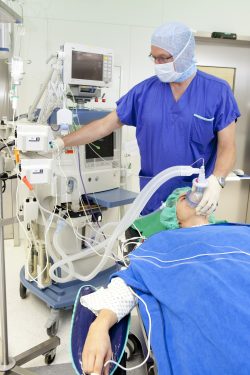Rapid Detox vs. Ultra-Rapid Detox
All worthwhile drug abuse treatment programs involve some form of detox as their first stage. This is done because drugs are essentially poisons, and removing them from the system eliminates physical withdrawal symptoms, and the physical dependence on the drug. However, traditionally this process is long and arduous, which causes many people to drop out of treatment. In the last 20 years, new strides have been made to lessen the amount of time it takes to get over, and the associated side effects of, withdrawal. These are rapid detox and ultra-rapid detox.
Contact us now to find detox centers near you!
What is Rapid Detox?
Rapid detox is where a drug user is placed under anesthesia, and then treated with a combination of medications, in order to remove the residual toxins from the drugs, and carry them out of the brain and body. The benefits of rapid detox are:

Rapid detox takes place under anesthesia, so patients avoid experiencing most withdrawal symptoms.
- detox time that is reduced from weeks or months to days
- no withdrawal symptoms while under the effects of anesthesia
- higher retention rates in drug treatment programs
While these benefits are nice, according to the American Society of Addiction Medicine, there are a number of drawbacks, including:
- the fact that it is only effective if it is part of a more comprehensive treatment program
- unpredictable results in the duration and intensity of withdrawal symptoms
- uncertain, and sometimes dire consequences stemming from complications with the anesthesia
All of these drawbacks should be carefully weighed against the possible benefits of rapid detox, and anyone considering it should be sure that they discuss the risks involved with a doctor before selecting it as part of their treatment program.
What Makes Ultra-Rapid Detox Different?
There is only one real difference between rapid detox and ultra-rapid detox. That difference being the time it takes to complete. Whereas rapid detox requires two to three sessions spread across a few days, ultra-rapid detox is completed in one day. This is achieved by placing the drug user under deeper anesthesia for a longer period of time. The benefits of ultra-rapid detox are the same as those for rapid detox. However, there are many more drawbacks. These include:
- the fact that ultra-rapid detox is only effective in people with mild or moderate dependence issues
- more frequent negative reactions and complications from anesthesia, such as: fluid in the lungs and breathing problems, cardiac irregularities and cardiac arrest, complications of diabetes, complications of a variety of mental health issues, and possible seizures.
- according to the National Institute on Drug Abuse, studies have shown that ultra-rapid detox is no more effective than any other detox method in reducing withdrawal symptoms.
These drawbacks should not keep you from considering ultra-rapid detox. Success and complications vary by patient, and it is up to you and your doctor whether or not this method is right for you.
Why Does it Matter?
It is important when selecting a detox program to know what options are available. Now that you know some of the risks and rewards that go along with rapid detox and ultra-rapid detox, you are in a better position to make an informed decision about what is right for you and your situation. However, you should always discuss any treatment plan with your doctor. What is most important, though, is to make the decision to enter detox, and begin the path to recovery.
Call 800-996-6135 today to find detox centers near you.
Sources
- American Society of Addiction Medicine. (2005). Public Policy Statement
On Rapid and Ultra Rapid Opioid Detoxification. - National Institute on Drug Abuse. (2006). Study Finds Withdrawal No Easier With Ultrarapid Opiate Detox.

